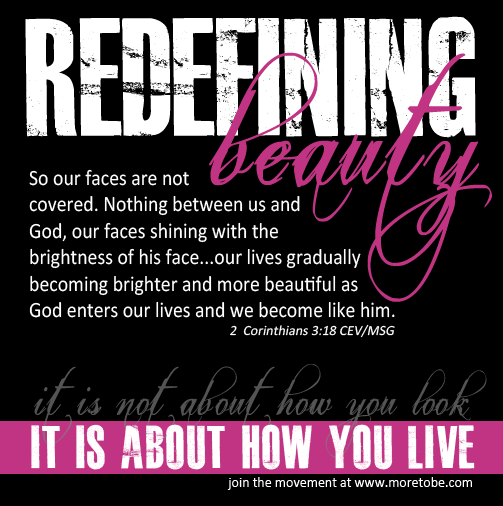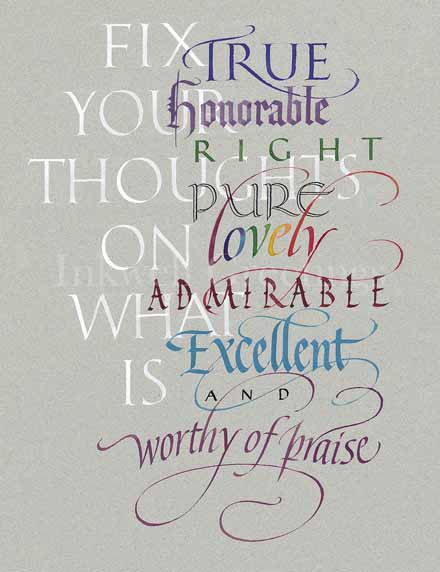What is beauty? What does it mean to be beautiful? In today’s world, when we read about a beautiful daughter who was virtuous in a fairy tale we immediately assume, “Wow, what sexist, awful fairy tale and Victorian writers, just because she’s virtuous means she’s automatically the most ‘beautiful’ person on earth. And then of course since her sisters are mean and bad, they are called ‘ugly’. How ridiculous!” With this mindset then, we turn on virtue, we start criticizing it, we start speaking about it in negative ways, we start mocking it. But is there something more here? What did these authors and tales mean when they bestowed this pronouncement of beauty or ugliness?

- Is this a modern day version of MacDonald's "princess" theory?
First, for modern readers, what it comes down to is the fact that in our world we have reduced beauty to someone who is physically attractive, someone that looks like a model or actress. However beauty, like the word love, is a loaded word. Perhaps what the authors of fairy tales or Victorian writers like George MacDonald are asking us to think about is not the fact that virtues make a person “beautiful” in the way we think of beauty. Instead acting good, being virtuous, actually having morals, makes a person beautiful. And it is not a surface beauty, it is a radiance that comes out, it is a joy, it is something intangible and almost imperceptible but we know it’s there. So although the media and even illustrators choose to portray the “beautiful princess” as the perfectly shaped and attractive girl, I do not think that these authors were working at such a shallow and surface level. George MacDonald, as a Christian, would have most likely been well versed in Christian thoughts on beauty. He surely would have been very aware of this passage from scripture, in Paul’s letter to the Philippians, that says:
Thus, with this in mind, MacDonald and others in his line of thought (ie Lewis and Tolkien), are not concerned with superficial beauty; they believed in ideals of the True, the Good, and the Beautiful and that bringing these things into your life and focusing on them could actually make a difference in your life. That what could happen is if one thinks on what is True, they’ll become a person who is true; if they think on Beauty, they’ll become beautiful; and if they think on the Good, then they will become the man or women that they are meant to become.
 |
| Curious to read this and see how it fits in with my propositions in this post... |
And what of the mean, evil, ugly characters?? In the same way that we’ve reduced the term beautiful to attractive, we’ve reduced ugly to physically unattractive. However, I don’t know about you, but I haven’t seen many descriptions of the physical ugliness of let’s say mean sisters in fairy tales. It is an ugliness that exudes from inside, that taints their being, that mars the way we think of them. Granted sometimes like in George MacDonald’s The Princess and the Goblin, the goblins are actually physically ugly to represent their bad behavior, but I mean they are goblins, right?! This calls to mind a scene from C.S. Lewis’s first Narnia book, The Magician’s Nephew, in which Jadis, the witch, comes to life inside of the great hall. The children notice that as they move down the table there is slowly an almost imperceptible change that has come over all of these rulers, and the corruption that they practiced has trickled into their physical appearance (which we should note, could actually happen, trials and hardships, or joys and blessings, have a way of making themselves physically evident in our countenance). However, the queen, Jadis, is physically beautiful, but her greed, her evilness is evident to the children, and to them she becomes ugly, but no so much on the surface but a burning from the inside. In this way there is an illumination of the danger in correlating ugliness with physical unattractiveness.
- Recently this idea of the utterly beautiful but evil woman has probably been depicted best by Charlize Theron in "Snow White and the Huntsman"


Perhaps another reason people 'turn' on virtuous characters is because purity, truth, goodness, etc. cause us to come face to face with our impurity, the ugliness of sin within us. We are then forced to choose how we will respond- either flee from this thing that causes us to feel shame, or run to it, cling to it, and be transformed by it. Anytime we are confronted with holiness/something holy, isn't the 'normal' reaction to feel even a bit shame, recognizing our unholiness, seeing the 'unclean' in ourself? Perhaps this is what is happening here. The unfortunate thing is, when this happens, instead of running the other way or putting up walls to 'defend' or justify our unworthy state, we are meant to wait.... and then Holiness and Truth and Beauty and Goodness Himself will reach out and touch us with the hope we need to raise our downcast eyes and see what we are meant to become!!
ReplyDeleteWow! I love that!! So true and I hadn't thought of it in that way. What you've said reminds me of a Fr. Mike homily where he talks about how afraid or unwilling we sometimes are to embrace change and transformation, "we're just fine the way we are, thanks but, I'm fine" is the mentality. So perhaps this stems from that as well. Thanks!!
DeleteI like your point about how we bring a modern interpretation of beauty to old books. It's interesting how much broader (and attainable) nineteenth-century ideals of "beauty" were-- when I look at pictures of famous period beauties, I am struck by how ordinary they look. In an era without make-up, orthodontic treatment, airbrushing, or exposure to as wide a pool of people, women could look a lot more natural and still be considered beautiful. OK, maybe just as many girls back then felt less attractive than their neighbors with straighter teeth, but their culture did not involve the kind of artificial/commercial beauty that so many moderns struggle with. Probably that played a role as well in their reaction to literary beauties.
ReplyDeleteThat is so true!! I hadn't thought about it from that perspective as much, but totally makes sense. Thank you for your thoughts!!
Delete